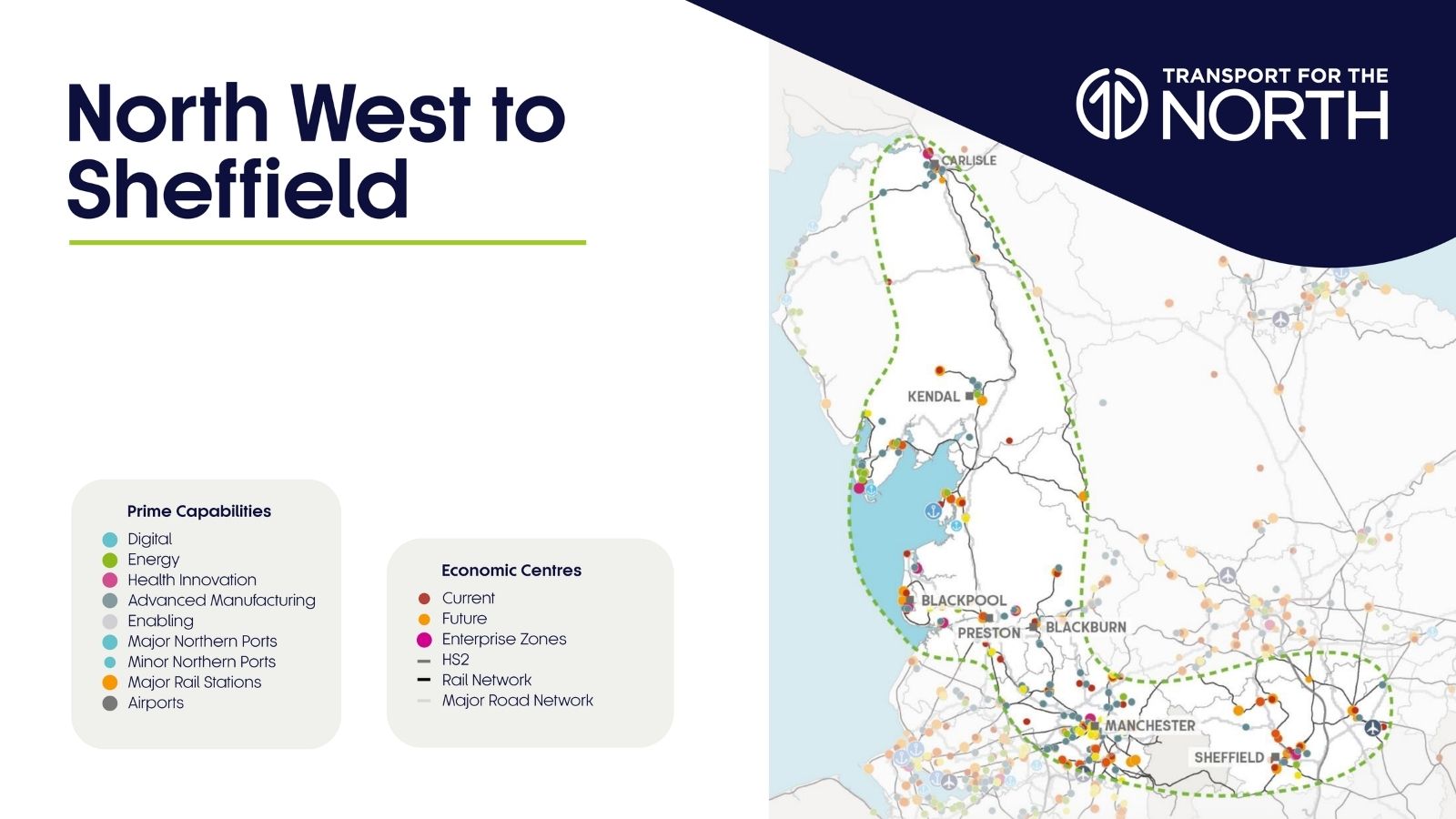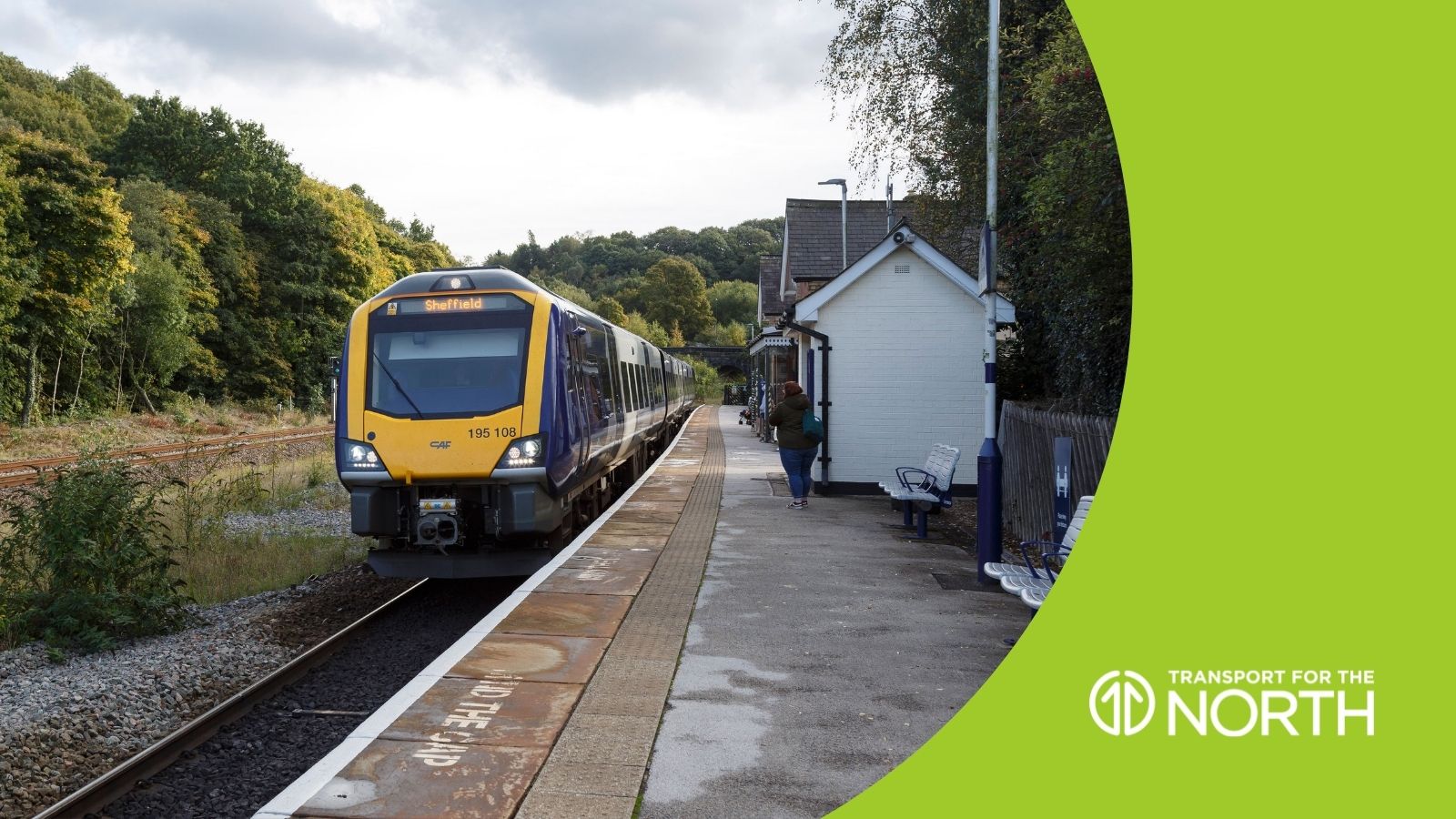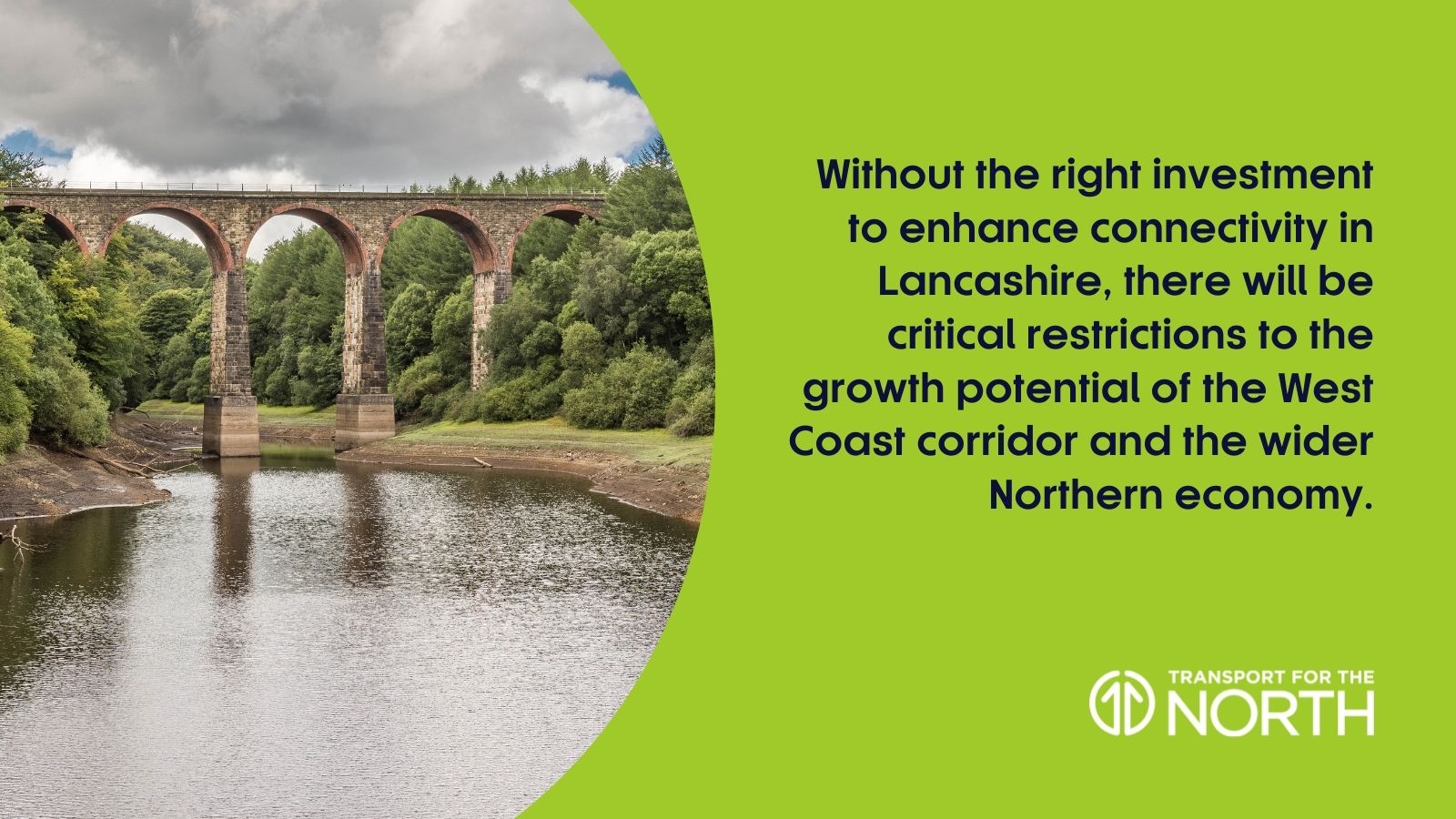The north of England encompasses such a large area with numerous thriving cities, it’s surprising that when compared to the south of the country, transport systems are severely outdated. Here at Transport for the North, we want to champion the North and strive for updated travel networks, making individual and business journeys easier and more efficient.
To this end, we have worked to develop a collection of Strategic Development Corridors (SDCs) – belts of travel routes across the north of England, where we believe the quality and reliability of transport systems can be improved.
The West Coast to Sheffield corridor is host to three large economic hubs: Sheffield, Lancashire and Cumbria. The focus for this corridor is to really build on the current rail networks to better serve people and businesses via passenger and freight services.
In this ‘Connecting the North’ blog series, we will look in detail at each of these corridors to understand the progress that has already been made, and the future opportunities they will provide, with new and exclusive insights from the relevant local transport authorities.

The corridor formed between the West Coast and Sheffield includes strong and growing assets in all three areas, with a particular focus in the sectors of advanced manufacturing, health technology, digital businesses and research centres. Strengthening transport links between these areas would allow for greater economic opportunities and efficiency for those travelling between the facilities.
The current rail framework across this corridor is poor and not fit for efficient travel. Moving forward, it will need to integrate with high speed rail connections and complement potential investment into roads in the North West and across the Pennines.
There is also an overwhelming demand for growth along this corridor extending up into Scotland, for both passenger and freight travel, allowing us to tap into a whole new country, its tourism and an assortment of many other revenue-driving opportunities.
Sitting within this corridor are economic assets such as Blackpool Airport Enterprise Zone, Sheffield City Region Advanced Manufacturing Park, The National College for Advanced Transport and Infrastructure in Doncaster, and base for nuclear and renewable energy on the Fylde Coast (to name a few). This area also hosts teaching and research, technical colleges and specialist institutions.
A Position Statement was published by us in March 2019 to summarise the main transport issues identified for this corridor and ‘interventions’ – ways in which we can improve these issues. Some of which include higher quality design solutions with environmental and whole life cost benefits and the consideration of behaviour trends and new technology developments.

When it comes to connecting the West Coast and Sheffield, the areas affected have shared their thoughts on any progress they have seen so far, as well as the potential opportunities that could develop if the connectivity gap was addressed further.

Sheffield – benefits
One of the transport planners at South Yorkshire Mayoral Combined Authority (formally Sheffield City Region) said: “The Region has strong economic links with Manchester and the North West, but relatively poor road and rail connectivity, due partly to the topography of the Pennines.
“Rail services between Sheffield and Manchester are slow, infrequent, unreliable and often overcrowded. Road links are also slow and tortuous over the Peak District, and prone to closure in winter, as well as accidents and landslips. There are no direct rail services between Sheffield and Lancashire or Cumbria, and we would welcome the introduction of a direct service, as well as more frequent and faster services to Manchester.
“We are working closely with Transport for the North on the proposals for Northern Powerhouse Rail on this corridor, as well as on a scheme to upgrade the A628 trans-Pennine road between Sheffield and Manchester and look forward to seeing the wealth of economic benefits this will undoubtedly bring to our region.”

Lancashire – benefits
Lancashire County Council, home to the largest aerospace cluster in the UK, the Samlesbury Aerospace Enterprise Zone, part of the Lancashire Advanced Manufacturing and Energy Cluster, relies on strong corridor links to grow and develop.
Transport planners in Lancashire recognise that road links tend to follow historic routes which are “dictated by topography rather than travel demand”. These roads are poorly aligned and are unsuitable for heavy vehicles and large volumes of road traffic.
When journey times are poor and unreliable, it is difficult to encourage agglomeration between economies, even when it comes to manufacturing and efficient movement of freight.
They went on to explain: “Rail links are also constrained by topography, with low line speeds, ageing infrastructure and capacity constraints, meaning that there is a significant impact on journey times and reliability. Both roads and rail are of a much lower quality than those further to the south.”
Unfortunately, travel times and service frequency are unattractive for business trips and commuting. The use of the rail network, more specifically in East Lancashire is relatively low when compared with neighbouring areas.
Without the right investment to enhance connectivity in Lancashire, there will be critical restrictions to the growth potential of the West Coast corridor and the wider Northern economy.

Cumbria Benefits
The corridor is home to a major visitor economy, with Cumbria one of the key assets for the UK economy.
Growth of this sector is dependent on enhanced strategic connectivity and access to international gateways (including airports in Manchester, Sheffield, and Carlisle, and ports at Barrow and Heysham) across the North.
Cumbria is also home to the the subsea technologies, renewable energy, and marine, nuclear and materials engineering cluster in Barrow-in-Furness and Ulverston, which can help power efforts to ensure the region establishes itself further as Britain’s energy coast.
Journey time improvements coupled with frequency, capacity, and reliability improvements on rail services will improve connectivity across the region – supporting those industries that can build competitiveness throughout the whole of the UK.